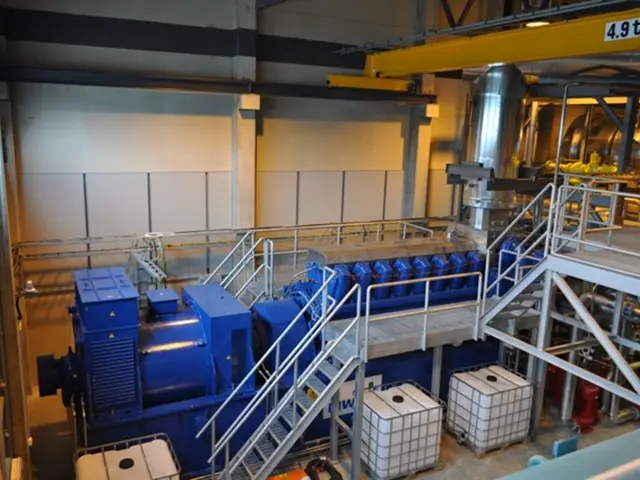Tech Conflicts: Episode AI - The Rebound of Technology Backlash
In a bid to foster a productive dialogue, the creation of a national AI resource for research necessitates a balanced discussion that considers both the potential advantages and potential negative impacts. Overstating the latter and isolating issues do not aid progress that benefits the public good.
Such a national resource could offer significant benefits in energy consumption, decarbonization, and societal advantages by enabling more efficient, transparent, and coordinated AI infrastructure development.
Energy Consumption and Efficiency
Centralizing AI resources nationally allows for better management and optimization of AI workloads. Some platforms have demonstrated reductions in AI power consumption by about 25% during testing phases. Efficient national resources could mitigate the otherwise rapidly increasing electricity demands from AI data centers, which are expected to more than double U.S. electricity use by 2028 and increase demand by 350% by 2030 if uncoordinated growth continues.
National coordination supports least-cost optimization models that map smarter solutions to meet AI and digital infrastructure energy demands with minimal cost and emissions impact, preventing unchecked growth that stresses the grid.
Decarbonization Benefits
National AI initiatives can facilitate AI-enhanced grid management technologies that improve the reliability, safety, and integration of renewable and low-carbon electricity sources into the power grid. By avoiding premature decommissioning of reliable, low-carbon dispatchable resources, national plans can maintain clean generation capacity while expanding AI infrastructure.
Societal Advantages Over Negative Impacts
A national resource approach encourages transparency, efficiency, and community-driven AI development, reducing costs for consumers by avoiding grid overloads and the subsidization of AI power needs via utility bills. It ensures AI development balances innovation with grid stability and decarbonization goals, addressing risks posed by AI’s large energy footprint and avoiding environmental regulatory rollbacks that could harm climate progress.
National coordination helps prevent energy inequities, where regions without sufficient power capacity might otherwise face excessive costs or grid instability due to isolated AI growth.
In conclusion, a national AI resource framework promotes energy-efficient AI use, supports decarbonization through AI-enabled grid optimization, and offers societal benefits by equitable, efficient, and transparent AI infrastructure growth. This approach can reduce negative impacts like excessive energy consumption, grid stress, and environmental harm that may occur with fragmented or unregulated AI expansion.
The tech sector, including data centers, accounts for about 1.4% of global carbon emissions. Digital technologies are key to decarbonizing existing energy sources, as evidenced by the European Commission's recent white paper on AI, which finds that digital technologies such as AI are a critical enabler for attaining the goals of the Green Deal.
The question should not be whether a national AI resource uses energy, but whether the energy consumption involved generates net-positive societal benefits. The critics' claims that the new resource will have massively negative impacts on the global carbon footprint require careful consideration and smart, considered responses.
Some of the issues raised around data protection and data security are real and deserve smart, considered responses. The task force creating a roadmap for the national AI resource intends to federate computational resources, embodying a mix of cloud and on-premise resources. The Massachusetts Green High Performance Computing Center (MGHPCC), an example of a regional resource, has prioritized computationally efficient hardware and algorithms and achieved LEED Platinum Certification, the highest level awarded for energy and environmental design.
The charge that the White House's plan will entrench Internet companies' power over computing resources is only valid if the national resource is exclusively an AI cloud, but it won't be. The relevant market for high-performance and AI computing includes processor vendors such as Nvidia, Intel, and AMD; server vendors such as Cray, Huawei, and Fujitsu; and storage vendors such as Dell, HPE, and IBM.
The FTC's senior advisor on AI has expressed concern about the "alarming-but-quiet capture of academic AI research by big tech." This is a valid concern that deserves careful attention and thoughtful responses. The creation of a national AI resource should prioritize openness, transparency, and collaboration to ensure that the benefits of AI are accessible to all, without entrenching monopolies or exacerbating existing inequalities.
Read also:
- Protecting Oneself Against Peril: Knowledge as the Primary Shield
- Rising Business Collaboration Interest Among Latvian and Indian Business Owners
- Sogang University set to debut its Digital Innovation Campus in early July, emphasizing AI and semiconductor-related educational programs.
- Debating the risks and benefits: Experts advocating for a European supergrid post Iberian power failure








